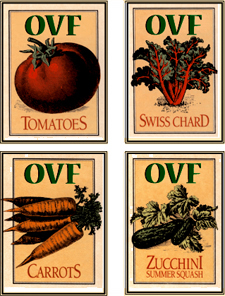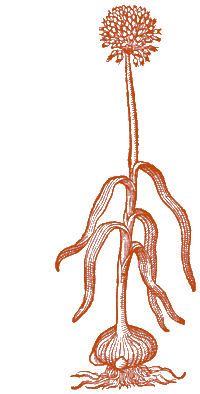

Seed Saving
1. Refrain from picking all your beautiful flowers! There must be flowers left on your plants in order for them to set seed.
2. Know your plant. Is it an open-pollinated or is it a hybrid, engineered by humans to exhibit special qualities? Hybrid seed will not be true, therefore it may not be suitable for seed saving.
3. Do you have more than one variety of the same plant from which you wish to save seed? You may have some cross-pollination going on, unfortunately. And that could lead to some freaky-looking offspring.
COLLECTING THE SEED
Now that you got all that down, go out there and find your healthiest,
best bearing plants of each variety you want to save seed from.
Now... STOP!
Collecting seeds too early will cause seeds to not be viable. Make sure that the seed heads are almost - if not already - finished developing. Pods will change colors from green to tan or brown and begin to dry out. Flower heads will begin to fall apart and look dry. Check daily for potential seed heads to pluck. If you worry that you might lose seed in the process of collecting, you can cut flower stalks as seed heads ripen. Pull a small paper bag over the seed heads; gather edge around the stalks, tie together and hang upside down in a dry place until heads split and seeds drop into bag.
CLEANING THE SEED
Notice a lot of debris or chaff among the newly collected seeds? You will want to do your best to clean this from the seed. Any chaff left may hold moisture, later causing mildew or mold which will kill the seed. Use a shallow bowl to separate seed from any other plant debris. Seed will generally be heavier and fall to the bottom of the bowl. The debris can be picked up from the top or gently blown to the side. Don't blow too hard. Not all that exciting to pick thousands of seed off the floor!
CONTINUE DRYING THE SEED
Remember to keep the seeds in a cool, dry area exposed to air until they are ready to store. Usually lay seeds out on plastic plates while they are drying. Seeds may stick to paper plates or paper towels. When seeds are thoroughly dry they will break rather than bend, it may take several weeks to achieve this so be patient. Use a dark, unheated spare bedroom for drying seed. Forget about them for a few weeks until they are ready to be stored for spring.
STORING THE SEED
Most seeds can be stored in airtight jars. Know any babies? Recycled baby food jars work great and they don't take up that much space. Always label your container with the variety, date and other important info. Whatever you decide to keep your seed in, it should be stored in a cool, dark, dry place. You may want to store your jars in an unheated room, a closet or even your refrigerator. Avoid opening the container until you are ready to plant or swap the seed. Amazingly, seed that is stored properly can be viable for years!!!
Courtesy: Blossomswap.com

